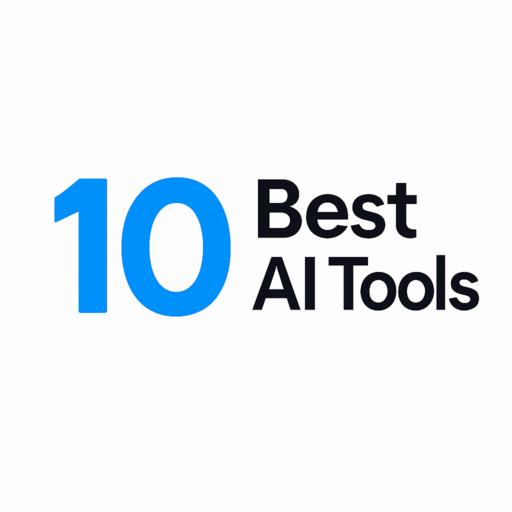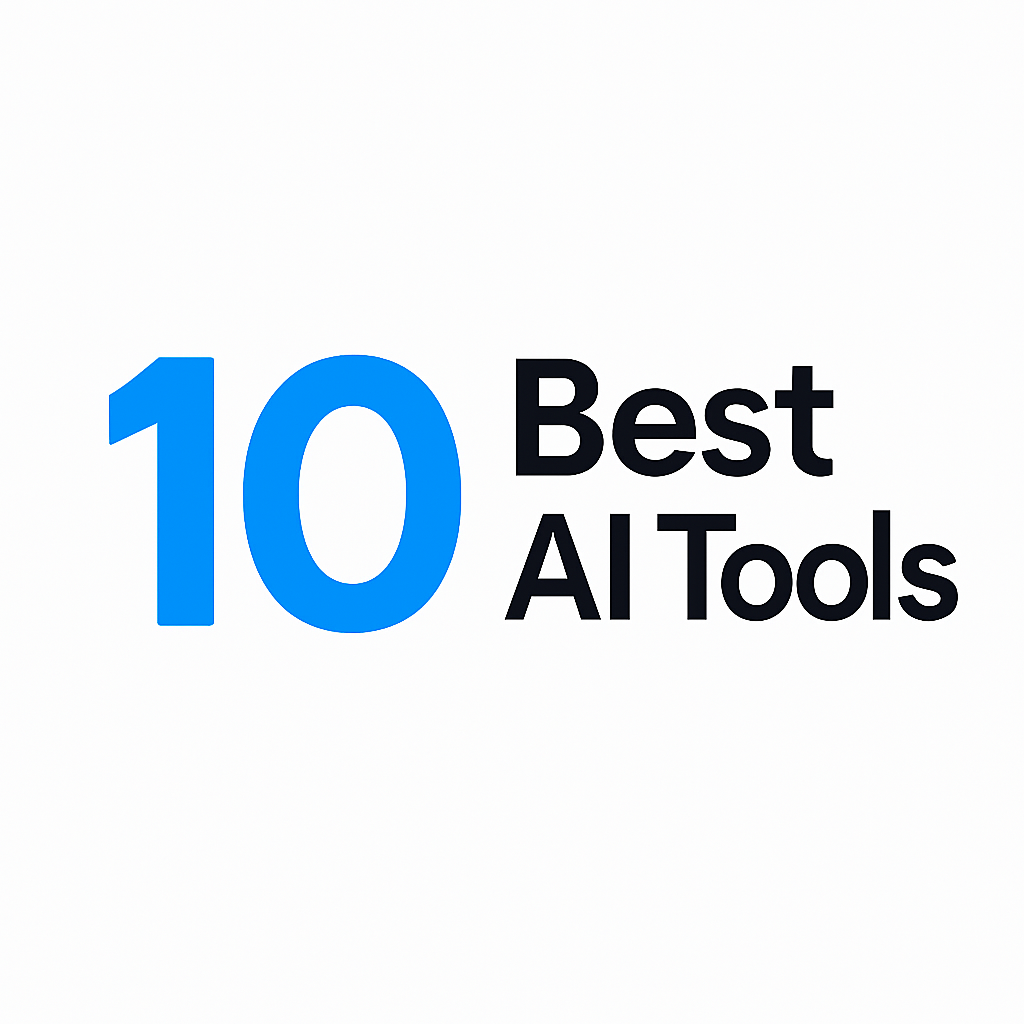From Chaos to Clarity: Let AI Unlock Your Data’s Hidden Stories
Let’s face it: we’ve all stared at a spreadsheet until our eyes glazed over, wondering if there’s a better way to find meaning in the numbers. Manual data analysis is time-consuming, error-prone, and—let’s be honest—kinda soul-sucking. Enter AI tools for data analysis, your new best friends for transforming raw data into actionable insights fast. Whether you’re predicting sales trends, optimizing operations, or just trying to make sense of customer feedback, AI can turn your data chaos into clarity. In this guide, we’ll break down the 10 best AI tools for data analysis in 2025, complete with pros, cons, pricing, and real-world use cases. Ready to ditch the pivot tables? Let’s dive in.
Comparison Table: Top AI Tools for Data Analysis at a Glance
| Tool | Key Features | Starting Price | Best For |
|---|---|---|---|
| Tableau Pulse | NLP queries, predictive modeling, Slack integration | $75/user/month | Real-time visualization & storytelling |
| Power BI + Copilot | AI-generated reports, Excel integration | $20/user/month | Teams embedded in Microsoft ecosystems |
| Google Looker Studio | Collaborative dashboards, BigQuery compatibility | Free (paid tiers from $25) | Startups & Google Workspace users |
| IBM Watson Analytics | Sentiment analysis, fraud detection | $99/user/month | Risk assessment & unstructured data |
| RapidMiner | No-code ML, model explainability | $2500/year | Citizen data scientists |
| Alteryx Auto Insights | Automated insights, API integrations | Custom pricing | Sales & finance forecasting |
| Databricks Lakehouse AI | Unified analytics, multi-cloud support | $299/user/month | Large-scale enterprise data |
| DataRobot | Automated ML, bias detection | Custom pricing | Predictive maintenance & healthcare |
| ThoughtSpot Sage | Search-driven analytics, GPT-4 integration | $95/user/month | Non-technical teams |
| Zoho Analytics + Zia AI | Affordable dashboards, CRM integration | $24/user/month | Small businesses & solopreneurs |
The 10 Best AI Tools for Data Analysis in 2025
1. Tableau Pulse
Features: Ask questions in plain English (“Show me Q3 sales trends”), predictive modeling, Slack alerts.
Pricing: Starts at $75/user/month.
Pros:
- Stunning, interactive visualizations.
- Integrates with tools like Salesforce.
Cons: Expensive for small teams; steep learning curve.
Alternatives: Power BI, Looker Studio.
Use Case: A retail manager predicts holiday inventory demand using real-time sales dashboards.
2. Microsoft Power BI + Copilot
Features: AI writes reports, Excel integration, Teams collaboration.
Pricing: From $20/user/month.
Pros:
- Copilot drafts summaries in minutes.
- Seamless for Office 365 users.
Cons: Limited customization for niche industries.
Alternatives: Tableau, Zoho Analytics.
Use Case: A marketing team automates campaign performance reports with AI-generated insights.
3. Google Looker Studio
Features: Free tier, live Google Sheets/BigQuery sync, team collaboration.
Pricing: Free (paid plans from $25/user/month).
Pros:
- Perfect for startups on a budget.
- Instant sharing via Google Workspace.
Cons: Lacks advanced predictive features.
Alternatives: Tableau, Power BI.
Use Case: A nonprofit tracks donor engagement trends using auto-generated charts.
4. IBM Watson Analytics
Features: NLP-driven insights, fraud detection, sentiment analysis.
Pricing: $99/user/month.
Pros:
- Excels with unstructured data (e.g., customer reviews).
- Strong security protocols.
Cons: Clunky interface for beginners.
Alternatives: RapidMiner, DataRobot.
Use Case: A bank flags suspicious transactions using AI-driven fraud patterns.
5. RapidMiner
Features: No-code ML models, explainable AI, 1500+ pre-built templates.
Pricing: $2500/year.
Pros:
- Empowers non-coders to build models.
- Transparent decision-making.
Cons: High cost for small teams.
Alternatives: DataRobot, Alteryx.
Use Case: A university predicts student dropout risks using demographic data.
6. Alteryx Auto Insights
Features: Automated forecasts, ERP/CRM integrations, anomaly detection.
Pricing: Custom quotes (starts around $5,000/year).
Pros:
- Instant insights for sales pipelines.
- Works with SAP, Salesforce, etc.
Cons: Price opaque; steep for solopreneurs.
Alternatives: Power BI, ThoughtSpot.
Use Case: A CFO forecasts cash flow gaps using AI-driven revenue trends.
7. Databricks Lakehouse AI
Features: Unifies data lakes/warehouses, multi-cloud, Python/R support.
Pricing: $299/user/month.
Pros:
- Handles petabytes of data.
- Collaboration-friendly for engineers.
Cons: Overkill for small datasets.
Alternatives: Snowflake, IBM Watson.
Use Case: A telecom giant analyzes customer churn across 10M+ accounts.
8. DataRobot
Features: AutoML, bias detection, compliance audits.
Pricing: Custom (enterprise-tier).
Pros:
- Ethical AI focus.
- Industry-specific templates (healthcare, retail).
Cons: Expensive; requires data science basics.
Alternatives: RapidMiner, H2O.ai.
Use Case: A hospital predicts patient readmission risks while auditing for bias.
9. ThoughtSpot Sage
Features: “Google-like” search, GPT-4 integration, Slack alerts.
Pricing: $95/user/month.
Pros:
- No training needed.
- Instant answers for executives.
Cons: Limited visualization customization.
Alternatives: Looker Studio, Tableau.
Use Case: A CEO asks, “What’s driving Q2 losses?” and gets an AI-generated memo.
10. Zoho Analytics + Zia AI
Features: 24/monthplan,CRMintegration,pixel−perfectreports.∗∗Pricing∗∗:Startsat24/monthplan,CRMintegration,pixel−perfectreports.∗∗Pricing∗∗:Startsat24/user/month.
Pros:
- Most affordable AI tool.
- Great for Zoho CRM users.
Cons: Basic predictive features.
Alternatives: Power BI, Looker.
Use Case: A freelancer automates client reports using CRM data and Zia’s insights.
How to Choose the Right AI Tool
Ask yourself:
- “How big is my data?” Small datasets? Zoho or Looker. Enterprise-scale? Databricks or IBM.
- “What’s my team’s skill level?” Non-technical? ThoughtSpot or Power BI. Data scientists? RapidMiner.
- “What’s my budget?” Start free (Looker), scale later (Tableau, DataRobot).
- “Do I need industry-specific features?” Healthcare? DataRobot. Sales? Alteryx.
- “Will this grow with me?” Avoid tools that can’t scale (e.g., Zoho for enterprises).
Pro Tips for Maximizing AI Tools
- Clean Your Data First: Use Trifacta or OpenRefine to fix errors before analysis.
- Combine Tools: Use Looker for dashboards + DataRobot for predictions.
- Train Your Team: Most tools offer free certifications (e.g., Tableau Public).
- Monitor AI Biases: Audit models quarterly with DataRobot’s fairness toolkit.
- Start with Templates: RapidMiner’s pre-built workflows save hours.
Ethical Considerations
- Bias: AI can inherit biases from historical data. Always audit models.
- Transparency: Use tools with “explainable AI” (e.g., RapidMiner) to build trust.
- Privacy: Ensure GDPR/CCPA compliance—avoid tools without encryption.
The Future of AI in Data Analysis
By 2030:
- Voice Commands: “Hey AI, analyze this quarter’s data” becomes standard.
- Real-Time Everything: Instant insights from live streams (e.g., IoT sensors).
- AI Collaboration: Tools will suggest strategies, not just charts.
Final Thoughts on AI Tools for Data Analysis
Gone are the days of manually crunching numbers while guzzling coffee. AI tools in 2025 are like having a data scientist, designer, and strategist in your pocket—all for less than the cost of a Netflix subscription. Whether you’re a scrappy startup or a Fortune 500 team, there’s a perfect AI tool waiting to turn your data into dollars. Ready to take the leap? Pick one tool from this list, try it free, and share your “aha!” moment with us in the comments!
Check Out: Best AI Tools for Educators
FAQs for AI Tools for Data Analysis
Q: Will AI replace data analysts?
A: Nope! AI handles grunt work, but humans ask the right questions and interpret results.
Q: Are these tools secure for sensitive data?
A: Most offer SOC 2 compliance and encryption—check their security docs first.
Q: How long to learn Power BI/Alteryx?
A: Basics in 1-2 days, mastery in 2-4 weeks.
Q: What if my data is messy?
A: Pre-clean with tools like Trifacta or hire a data prep service.
Q: Can I try before buying?
A: Yes! All tools offer free trials (7-30 days).
Follow 10 Best AI Tools on LinkedIn for more






